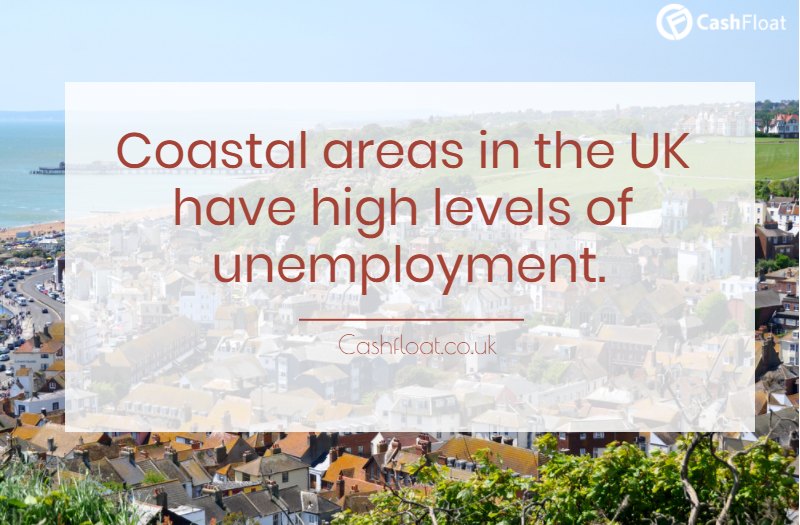Ever heard of the great north-south divide? It is a fact that you will find most of Britain’s most deprived areas in the North East. Learn what makes a rich or poor area, and discover some interesting facts and stats.

Story highlights
- There is a 25% difference in pay for workers accross the country
- Coastal areas in the UK are among the highest in levels of unemployment
- Although they earn more, Londoners have less of a disposable income
Living in a Rich or Poor Area – Explored
A study by the Office of National Statistics (ONS) revealed the top areas in Britain, with the highest levels of deprivation and the least deprived. They took many factors into account to reach their conclusions. They accounted for employment levels in the area, income levels, health and disability, skills and training, education, living environment and access to housing and services. The study revealed that all forms of deprivation were more usual in urbanised areas of the UK.
By seeing London I have seen as much of life as the world can show. - Samuel Johnson Click To Tweet
The most deprived area in the UK
The UK’s most deprived area turned out to be Oldham in Greater Manchester. There were five towns from the North East of the country that are listed in the top 10 most deprived areas in Britain. This may seem surprising to many as Manchester has the biggest economy outside of London. It is competing to become England’s second city along with Birmingham, which only has a slightly smaller economy. The towns and cities that were found to have the lowest rates of deprived areas were mostly in the South East. Guildford took first place.

What are the reasons that northern areas are poorer?
The Institute for Fiscal Studies in its annual living standards, poverty and inequality report, revealed a huge pay gap between a rich or poor area in the north and south. It showed a 25% difference in pay for workers in the south-east. They compared this to the poorest region of the country, the West Midlands. The de-industrialisation of Britain over the past few decades has taken its toll on these areas. While now poor, they were once amongst the most prosperous areas of the UK. The report describes how during the 1970’s the Midlands and the south-east were the only areas along with London where wages were higher than the national average. Lower wages could result in workers resorting to pay day loans.
Other poor areas in the UK
Coastal areas in the UK are among some of the areas in the country with the highest levels of unemployment. They also have some of the highest figures for people who earn below the national average wage. The tourist industry in these areas has been in decline for years. In addition, they used to be important towns that were active in the fishing industry.

There is an underlying problem for many of these coastal towns. This is that their infrastructure is insufficient to take them to work in nearby areas that can employ them. The government has pledged £40 million to encourage tourism and employment for residents in local towns. But, this may not be fairly distributed. There are coastal towns in the south-east that get overlooked by policymakers. Possibly, this is because they are in affluent regions of the country where unemployment figures are deemed satisfactory.
- The ONS survey took many factors into account to determine the most deprived area in Britain.
- Oldham in Greater Manchester was the most deprived. Guildford in the south was the least.
- Workers in the south-east receive 25% more payment than workers in the Midlands.
- The Midlands were once thriving industrial areas with wages above the national average.
- Coastal areas have some of the highest rates of unemployment in the country.
- The infrastructure to link a rich or poor area to help find employment is lacking.
- Some southern seaside towns are in affluent areas and are overlooked by policymakers.
The difference in transport in a rich or poor area
The Recent analysis from the think tank IPPR North reveals a shocking difference in spending for Londoners per person on transport projects that are being built now and shortly. The figures are £1,943 compared to a paltry £427 for residents in the north of England. The author of the report quite rightly pointed to the fact that it is quicker to travel from London to Paris than it is from Liverpool to Hull. The study brings to light the fact that unless the government invest in H3 high-speed rail links in the north of the country to encourage business between cities and allow people to travel to work, then the north will never reach its untapped potential. In addition, unemployment can lead to people borrowing loans for people who are unemployed or on benefits that they cannot afford, which can lead to bad debt.
Are Londoners better off than those in poorer areas?
London is the most unequal city in the UK. There, you have extremely wealthy residents alongside some of the poorest boroughs in the country. In a survey carried out by Cashfloat, London provided the highest number of applications for instant decision payday loans in the UK. You would assume that Londoners are much better off than residents who inhabit other UK cities. However, research shows that this is untrue. They may be earning 15% more wages than the national average, but the cost to live and work in London is many times higher than in other cities. As a result, Londoners have less disposable income.

A survey compared living costs in 16 major UK cities and found that a worker in Aberdeen earns £2,247.06 a month and has basic monthly costs of £1,074.08. This leaves him with £1,173 each month to spend. A worker in London in comparison earns £2,388.96 per month and has basic living costs of £2,193.78. This leaves him with £195.18 left over. As you can see, Londoners earn the most money but that does not make them rich.
What can local leaders do to improve things in their area?
It’s a fact that the north is underfunded compared to the south and the government has pledged to fix this with a series of projects such as their industrial strategy. The Treasury has recently agreed seven devolution deals that are worth £4.8 billion. These funds will allow local leaders to build homes, create jobs, boost skills and improve local transport links. Without investment in poorer areas, the divide in the UK and the pay gap looks set to keep widening.
Conclusion to what makes a rich or poor area in the UK
It is lack of work and not enough good transportation links for people to travel to nearby cities to find employment that is responsible for the poor areas in the UK. There is certainly less money spent in the north. However, people who live in the north of the country are many times better off than those who live in London. This is because they pay so much less in living expenses. This implies that people in the poorer cities do not necessarily require the use of unsecured no guarantor loans more than richer cities. Better rail links between cities could improve trade and industry and linked. Small cities could be joined to form a large second industrial hub in the north.

